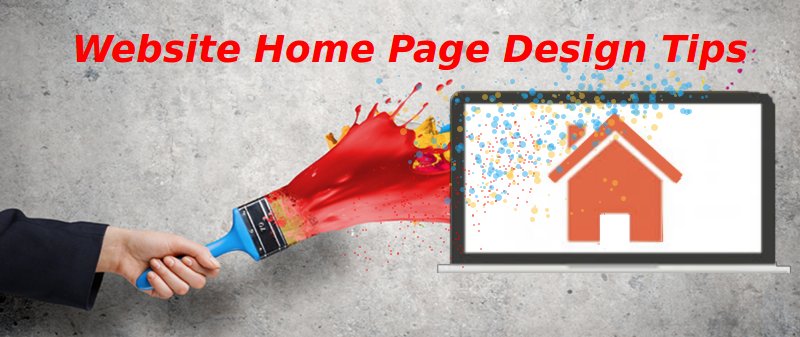The homepage is one of the most important pages of a website. This single page receives the highest traffic and is responsible for establishing credibility, attracting sales and building lifelong customers. However, building an effective homepage can be a challenging task especially if you are running an e-commerce website where you showcase hundreds of thousands of products, and featured categories on it.
The webmasters often have the temptation to put everything on the homepage which usually leads to a complex mess.
To help webmasters follow the best homepage design practices, we reached out to various experts in the website design industry and asked their best tips on building an effective and appealing homepage.
1. Use a hero Image
The hero image trend has become quite popular among various web users. The trend is being used by responsive and minimalist websites. Such websites add a large background video or image with a killer headline or a few lines of text that capture the attention of the user. Usually, they use the place to add a call-to-action, which can be an external link to other website or page, a sign-up form, a subscription or a download an e-book button. Thus, a hero image can be used in a variety of ways to boost your conversions.
2. Homepage Navigation Menu
When it comes to sites, the homepage navigation menu acts like a roadmap to a variety of pages and products on your website. If your navigation menu is concise and clear, users will surely have a good time on your website and stick for long, which ultimately brings in more customers for your business.
Well, the navigation menu consists of certain standard elements that web users are habitual of. As an instance, the ‘about us’ page is often seen on the extreme right of the homepage. But this does not mean you cannot try and experiment with your page and ideas of putting different elements on the page. You never know when you might land a great website design idea. But try to keep it simple and effective and close to the standard navigation.

3. Homepage Images
Adding too many images on the homepage can make it look cluttered and unorganized. Only add images when they are important or solve a particular purpose, especially those that help you convey a message across about your website, brand or products. Since images are often heavy and take up a lot of space, you need to act wisely while using them.
Visual content plays a crucial role in the success of a website. Many industries depend completely on images such as personal portfolios, entertainment, fashion and lifestyle and more. Of course, images have an amazing impact on your visitors if used appropriately.
There are certain points you need to keep in mind while using images on your homepage:
- Don’t ever use stock photography. You may have a limited budget for your online venture that insists you use stock images. But using these common images leave no impact on users merely because they have encountered these images on various other websites. Thus it is always recommended to use original photographs as much as possible.
- Use animated or GIFs images to add an element of fun, but of course, ensure they solve a particular purpose or contain a relevant message about your business
- If you tend to add an image of your features products, keep them above the fold.
- Web users are habitual of finding the logos on the top left-hand corner of the website. Don’t experiment with it by changing its location.
- For improved conversions, user demo videos instead of simple images.
4. Color Scheme
Color Scheme is yet another important aspect of building an effective homepage for your website. You must use colors that not only reflect your brand’s identity but also appeals to your visitors eye. Use colors for a variety of elements on your homepage that highlights certain areas more than others. The objective is to direct the attention towards those sections of the site that will generate conversions and sales.
The colors you use for supporting text, images, call-to-action (CTA), title, main menu, and logo should complement each other to build a pleasing visual on the homepage.
Remember, don’t use too many colors at once. Stick with two or maximum four primary colors to make your point. Also, ensure that you use either black or white on the homepage, though there are certain exceptions to this point such as entertainment site, home décor, lifestyle, and fashion, as well as kids website.
5. Tell a Story
Your homepage is an opportunity to leave an impression about your business – not just what you offer, but what your company is about and why users should choose you. While users are navigating on your website, help them understand more about your brand and what makes it different from others. If you are displaying a range of products, you can balance it by adding curated collections, testimonials, and reviews. Emphasize your offering by using navigation that makes you stand out from your competitors.
You can also place an explainer video on one side of your homepage which can boost your credibility and help you build trust among your customers. Trust me, more than half the customers will click the play button to know more about you.

I agree with all the points given in this article but you missed a tip about footer design. Footer is also an important part of the websites.
Thanks for sharing these tips. I’m working on a new project and will keep these points in kind
I will follow these tips. Really useful these are. Thanks!